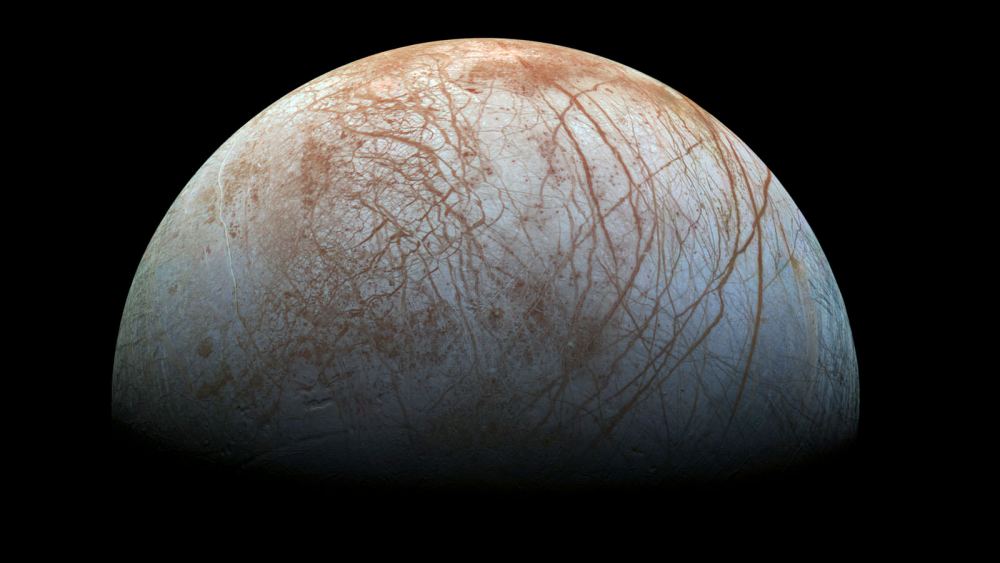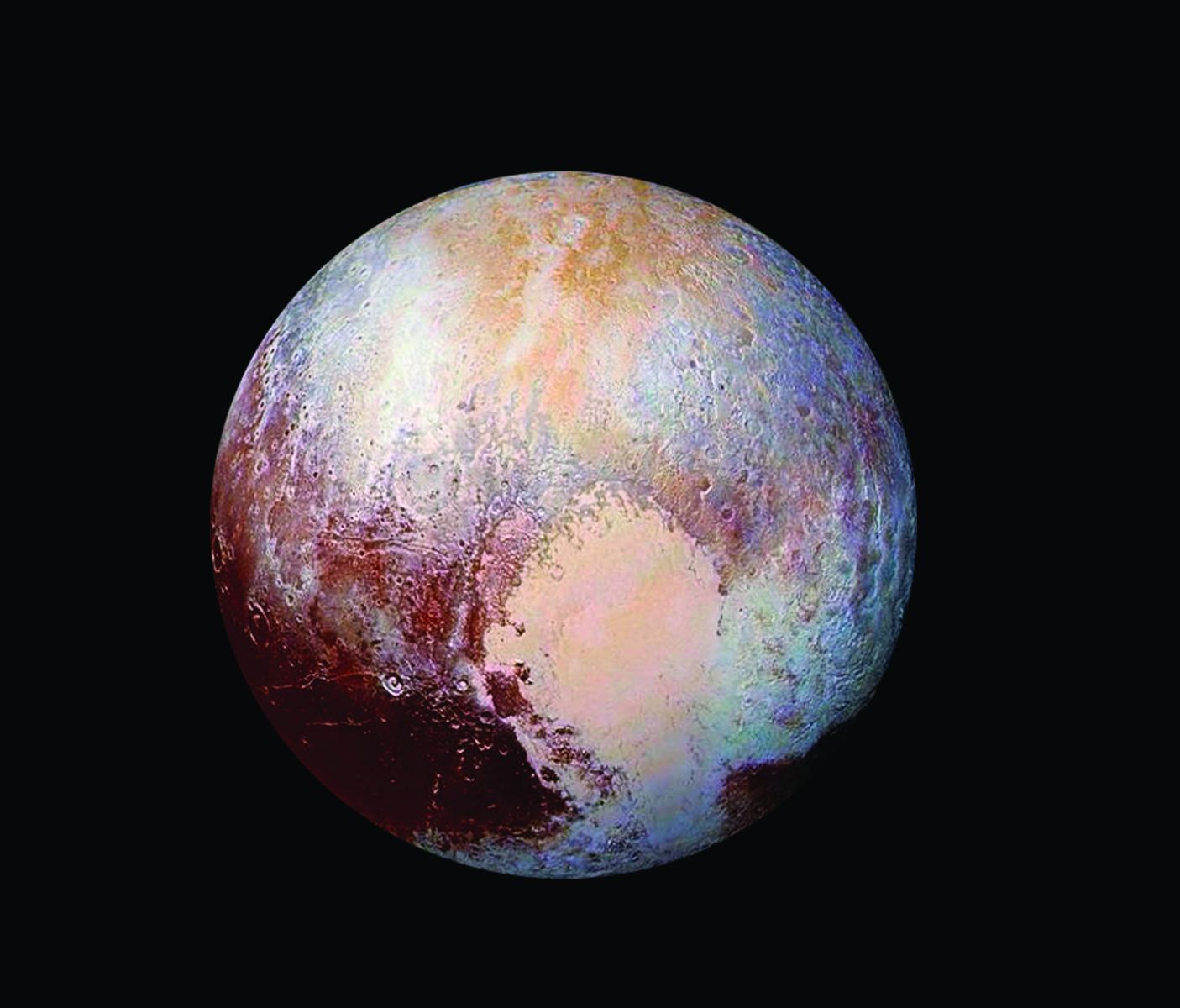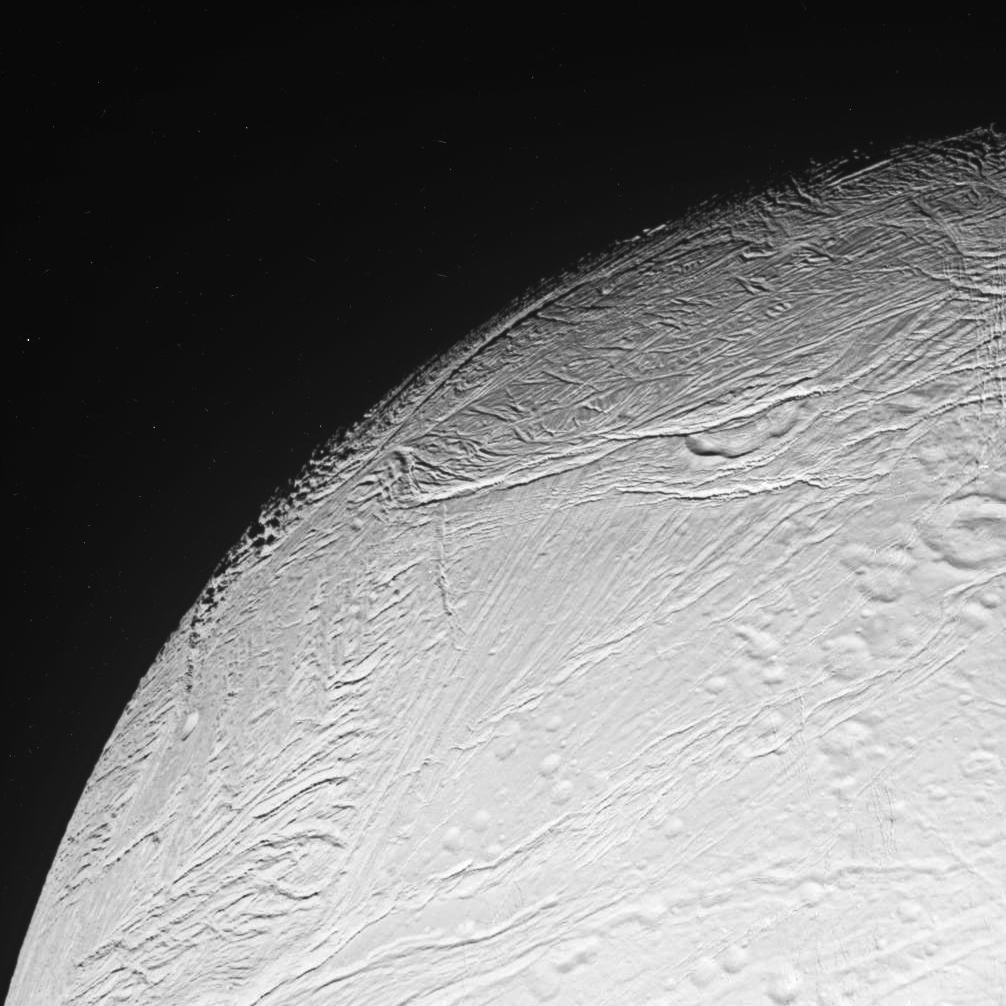Underneath its shell of ice, the globe-spanning ocean of Enceladus isn’t sitting still. Instead, it might possibly host massive ocean currents, driven by changes in salinity.
Continue reading “There are Ocean Currents Under the ice on Enceladus”More Evidence that Europa’s Oceans Could be Habitable

At first glance, Jupiter’s moon Europa doesn’t seem much like Earth. It’s a moon, not a planet, and it’s covered in ice. But it does have one important thing in common with Earth: a warm, salty ocean.
Now there’s even more evidence that Europa’s sub-surface ocean is habitable.
Continue reading “More Evidence that Europa’s Oceans Could be Habitable”Pluto and Other Kuiper Belt Objects Started Out With Water Oceans, and Have Been Slowly Freezing Solid for Billions of Years

It seems unlikely that an ocean could persist on a world that never gets closer than 30 astronomical units from the Sun. But that’s the case with Pluto. Evidence shows that it has a sub-surface ocean between 100 to 180 km thick, at the boundary between the core and the mantle. Other Kuiper Belt Objects may be similar.
But time might be running out for these buried oceans, which will one day turn to ice.
Continue reading “Pluto and Other Kuiper Belt Objects Started Out With Water Oceans, and Have Been Slowly Freezing Solid for Billions of Years”Europa Clipper Team Braces For Bad News

Jupiter’s moon Europa is a juicy target for exploration. Beneath its surface of ice there’s a warm salty, ocean. Or potentially, at least. And if Earth is our guide, wherever you find a warm, salty, ocean, you find life. But finding it requires a dedicated, and unique, mission.
If each of the bodies in our Solar System weren’t so different from each other, we could just have one or two types of missions. Things would be much easier, but also much more boring. But Europa isn’t boring, and it won’t be easy to explore. Exploring it will require a complex, custom mission. That means expensive.
NASA’s proposed mission to Europa is called the Europa Clipper. It’s been in the works for a few years now. But as the mission takes shape, and as the science gets worked out, a parallel process of budget wrangling is also ongoing. And as reported by SpaceNews.com there could be bad news incoming for the first-ever mission to Europa.

At issue is next year’s funding for the Europa Clipper. Officials with NASA’s Outer Planets Assessment Group are looking for ways to economize and cut costs for Fiscal Year (FY) 2017, while still staying on track for a mission launch in 2022.
According to Bob Pappalardo, Europa Clipper’s project scientist at the Jet Propulsion Laboratory, funding will be squeezed in 2017. “There is this squeeze in FY17 that we have,” said Pappalardo. “We’re asking the instrument teams and various other aspects of the project, given that squeeze, what will it take in the out years to maintain that ’22 launch.”
As for the actual dollar amounts, there are different numbers floating around, and they don’t all jive with each other. In 2016, the Europa Mission received $175 million from Congress, but in the administration’s budget proposal for 2017, they only requested $49.6 million.
There’s clearly some uncertainty in these numbers, and that uncertainty is reflected in Congress, too. An FY 2017 House bill earmarks $260 million for the Europa mission. And the Senate has crafted a bill in support of the mission, but doesn’t allocate any funding for it. Neither the Senate nor the Congress has passed their bills.
This is not the first time that a mis-alignment has appeared between NASA and the different levels of government when it comes to funding. It’s pretty common. It’s also pretty common for the higher level of funding to prevail. But it’s odd that NASA’s requested amount is so low. NASA’s own low figure of $49.6 million is fuelling the perception that they themselves are losing interest in the Europa Clipper.
But SpaceNews.com is reporting that that is not the case. According to Curt Niebur, NASA’s program scientist for the Europa mission, “Everyone is aware of how supportive and generous Congress has been of this mission, and I’m happy to say that that support and encouragement is now shared by the administration, and by NASA as well. Everybody is on board the Europa Clipper and getting this mission to the launch pad as soon as our technical challenges and our budget will allow.”
What all this seems to mean is that the initial science and instrumentation for the mission will be maintained, but no additional capacity will be added. NASA is no longer considering things like free-flying probes to measure the plumes of water ice coming off the moon. According to Niebur, “The additional science value provided by these additions was not commensurate with the associated impact to resources, to accommodation, to cost. There just wasn’t enough science there to balance that out.”
The Europa Clipper will be a direct shot to Europa, without any gravity assist on the way. It will likely be powered by the Space Launch System. The main goal of the mission is to learn more about the icy moon’s potential habitability. There are tantalizing clues that it has an ocean about 100 km thick, kept warm by the gravity-tidal interactions with Jupiter, and possibly by radioactive decay in the rocky mantle. There’s also some evidence that the composition of the sub-surface ocean is similar to Earth’s.
Mars is a fascinating target, no doubt about it. But as far as harbouring life, Europa might be a better bet. Europa’s warm, salty ocean versus Mar’s dry, cold surface? A lot of resources have been spent studying Mars, and the Europa mission represents a shift in resources in that regard.
It’s unfortunate that a few tens of million dollars here or there can hamper our search for life beyond Earth. But the USA is a democracy, so that’s the way it is. These discrepancies and possible disputes between NASA and the different levels of government may seem disconcerting, but that’s the way these things get done.
At least we hope it is.
Sources: SpaceNews.com
Europa on Universe Today:

